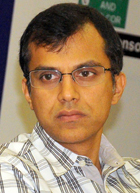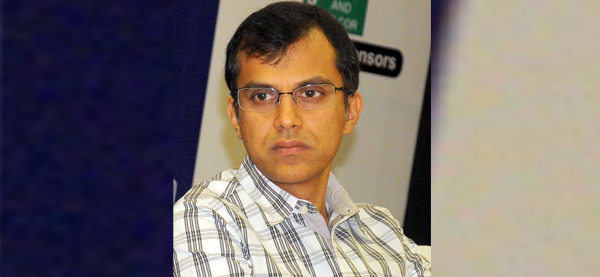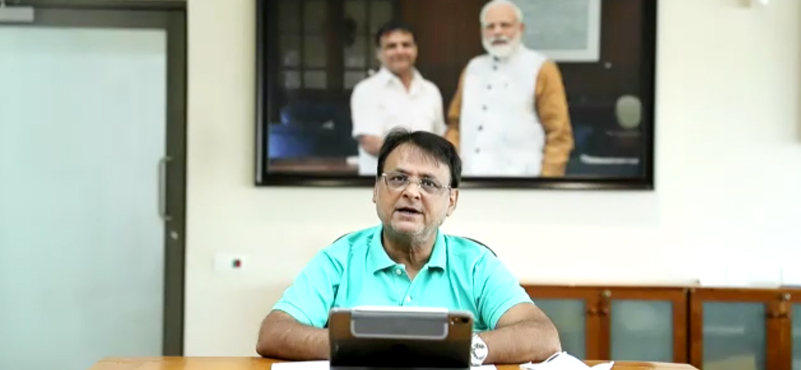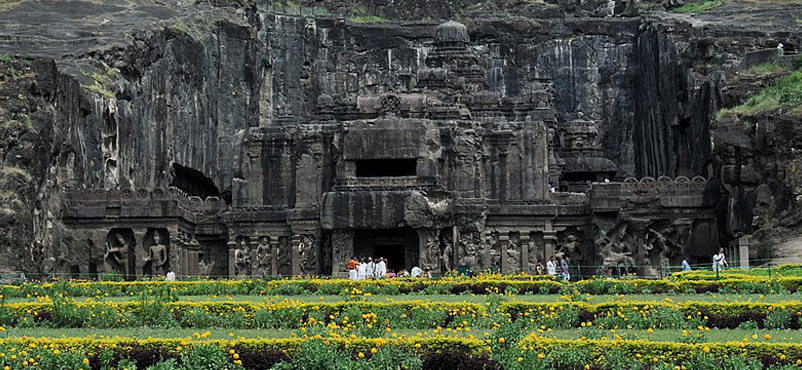The newly formed Andhra Pradesh has ushered new opportunities for investment into tourism and hospitality, said Srikant Nagulapalli, Secretary to Andhra Pradesh Government (Tourism & Culture). In an exclusive interview to TF, he highlighted state’s diverse tourism offerings, key initiatives on the policy front and the state government keenness on projecting the state as a destination with several tourism segments in its repertoire, and not leaning on a handful of tourism pegs.
 Andhra Pradesh’s most visited tourism assets emanate from religious and spiritual tourism segment – some of the temples in the state are most visited sites in India. How critical are these for the overall tourism bouquet of the state?
Andhra Pradesh’s most visited tourism assets emanate from religious and spiritual tourism segment – some of the temples in the state are most visited sites in India. How critical are these for the overall tourism bouquet of the state?
Andhra Pradesh, as you rightly said, is known for religious tourism. It has the best-managed temples in the country, and also the richest Hindu temple and the most visited Hindu temple in Lord Balaji and Tirupati. But, as far as tourism is concerned, what we are looking at is to explore the tourism assets of the state, the newly-divided state of Andhra Pradesh, for promoting tourism, not only based on the pillar of religious tourism, but also on heritage, culture and the authentic tourist experiences that can emerge because of its natural advantages as a state. We would like to leverage on the undiscovered territory of the state; undiscovered culture; undiscovered heritage; undiscovered architecture; undiscovered lifestyle and also the immense opportunities that the divided state has thrown open for investors.
So, all this put together, we would like to leverage for promoting state’s tourism.
You talked about creating experiences. I think a part of that strategy has been tying up with OTAs to get the homestay segment moving in the state. How are you going about it? Tell us a little bit about homestays and the state’s foray therein?
For homestays, we had detailed discussions with Airbnb, Stayzilla and MakeMyTrip, all three, and now we are in the process of finalizing the Memorandum of Understanding (MoU) with all these three entities. Our idea is, I mean nowadays, a lot of the younger generation is educated and the younger lot are settling down in various other countries, or elsewhere in the metropolitan cities. There are very good houses existing in the rural areas and semi-urban areas which remain idle. So, we want to utilize that idle capacity for tourism purposes in order to improve the value of the state, and towards that end, we intend to partner with these agencies. The policy on homestays is also being brought out. We are also bringing out a policy for heritage homes, that is also something that we are undertaking.
One unique advantage the state has is its coastline. It is very well endowed in that sense, and a lot of work in that direction has already moved, as we read in media reports about state’s push in the adventure sport tourism segment. Could you share with us some key policies and programs that are being put in place by the state government?
Firstly, the state has a very-long coastline of over 1,000 kilometres. Secondly, it has two very large rivers in Krishna and Godavari – which has potential for water sports and cruise tourism. Then the delta area of Godavari has almost 1,00,000 acres of existing backwaters. Though the coast is long, and it is the East coast, we have pockets which are extremely safe and suitable for swimming and tourism, beside cruise tourism and river Godavari, that is another part. We wish to develop all the three with the right kind of infrastructure and policy framework for investors to come and make their investments and start operations.
You have commenced Heli-tourism in the state – which is currently operational between Shilpa Ram and Tirupati. Is the state tourism looking at expanding the service to other parts of the state? J&K is doing it fairly successfully. Are you looking at tapping the luxury segment? What is the plan there?
Heli-tourism in Tirupati, now, is primarily in the city and the surrounding areas that we intend to cover. But then there is also Srisailam – which is accessible from Hyderabad by a helicopter – that is another potential that we are looking at. Apart from this, Vishakhapatnam is another location that, for locals, Heli-tourism is something that we are looking at.
There is also a certain degree of Buddhist heritage in the state. Although, it may a bit far-fetched, but given that the central government has been working on creating a Buddhist Circuit, do you envisage the possibility of Andhra Pradesh being a part of the larger Buddhist Circuit itinerary?
Yes, certainly. Because after Bodh Gaya, one of the most important sites, as far as Buddhism is concerned, on this earth is Amravati, because of Acharya Nagarjuna having stayed and taught there. He exported Buddhism from India to the Far East – to the eastern part of the world. In that context, we have extremely important ancient Buddhist heritage site in Amravati. We intend to develop that. We are doing that currently, not only in terms of infrastructure, but also by popularizing the site and making local people and the people of the country understand and feel proud of it.
What is the image that you wish Andhra Pradesh to acquire in the eyes of a traveller? What are the important aspects of the larger tourism profile that the state tourism board will be focusing on?
It is a large state with almost 1000 kilometres in length. So, it is a state full of diversity. On the northern end near Odisha, you have Vishakhapatnam with different tribal cultures and hills, and the beaches and cosmopolitan city – that is one part. When you come to the heart of Andhra Pradesh, you have river bodies, backwaters and different cultures, which is like the authentic experience of the civilization of the state one can experience. And, if you go to Amravati, you can experience the Buddhist past. You can go back to 2,500 years and experience that. Down south, in the Nellore region, near Chennai, a different world awaits you in terms of eco-tourism with places like the Pulicat Lake. If you go towards, Bengaluru, near Karnataka, all the Rayelaseema region is full of heritage, historic and pre-historic sites dating back to 60,000 years. So, it is a land of diversity, basically. Each of these five regions have their own distinct and strong heritage and cultural offerings.




































